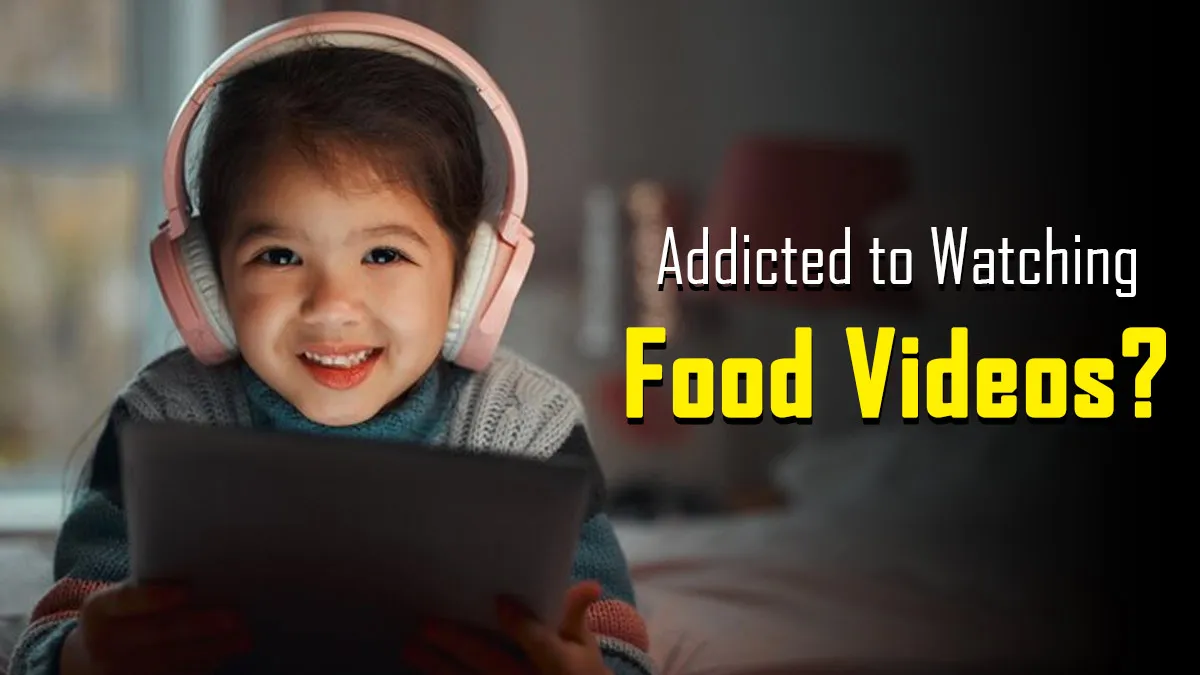
In today’s digital world, children are constantly exposed to endless streams of colourful, tempting food content online. From viral videos of giant burgers dripping with cheese to influencers devouring towering desserts, “food porn” has become a global obsession. But could this visual feast harm your child’s relationship with food? Experts warn that repeated exposure to hyper-attractive food content may rewire young brains, leading to cravings, overeating, and long-term health risks.
Table of Content:-
This growing concern has caught the attention of health professionals who study the impact of modern habits on eating behaviours. An expert explains how food content affects children’s brains and bodies. Read ahead to learn how dopamine, cravings, and screen habits create unhealthy eating patterns and what parents can do.
Why Do Food Videos Feel Like a Drug?
View this post on Instagram
The brain releases dopamine, a “feel-good” chemical when we see or eat something rewarding. Dr Santhosh Jacob, HOD of Obesity Management and Exercise Medicine, Ageless Fitness, Chennai, warns that food content online triggers unrealistic dopamine spikes. “Visual stimulation from food videos causes a dopamine surge. But unlike real meals, this rush isn’t followed by actual eating. Over time, kids crave more visual ‘fixes’ to feel satisfied.”
This cycle mirrors addiction. Scrolling through food content becomes a habit to chase dopamine highs, not hunger. A 2020 study in JAMA Pediatrics found that kids who watched food ads ate 30% more snacks afterwards, even if they weren’t hungry.
Why Watching Others Eat Makes Kids Crave More
Ever felt hungry after watching someone eat? Dr Jacob says this is due to mirror neurons, brain cells that mimic actions we see. “Watching others eat hyper-palatable food tricks the brain. Mirror neurons make kids feel like they’re eating too, but without calories. It’s like craving intimacy after watching others have sex. The brain can’t tell the difference.” This false “participation” leaves kids unsatisfied. They crave real food to match what they’ve seen, often choosing unhealthy options.
ALSO READ: How Dogs Help Your Baby’s Immune System: Benefits, Risks, and Safety Tips for New Parents
Screen Time Tricks the Body Into “Hunger Mode”
Food videos don’t just affect the mind, they hijack the body. The expert notes that screens stimulate ghrelin, the hunger hormone. “Watching food content raises ghrelin levels, even if the child isn’t hungry. Their body prepares to eat, but no real food arrives. This confusion leads to random cravings and overeating later.” For example, a child watching a dessert video after dinner might suddenly crave ice cream, despite feeling full. Over time, this weakens their ability to listen to natural hunger cues.
The Vicious Cycle of Craving, Guilt, and Dopamine

“This cycle is dangerous. Dopamine dependence can lead to obesity, anxiety, or eating disorders,” he says. Dr Jacob explains how food porn creates a harmful loop:
- Craving: Visual stimulation triggers dopamine and ghrelin.
- Eating: Kids seek similar foods, often overeating.
- Guilt: Overeating leads to shame, especially if they’re body-conscious.
- Dependence: To escape guilt, they return to food content for dopamine.
How to Protect Your Child’s Relationship With Food
Dr Jacob shares practical tips for parents:
- Limit Screen Time: Restrict food-related content. Use apps to block food videos.
- Educate Early: Teach kids how ads and videos manipulate cravings.
- Promote Whole Foods: Keep healthy snacks visible. Cook meals together.
- Practice Mindful Eating: Discourage screens during meals. Encourage slow, conscious eating.
- Stay Active: Physical activity balances dopamine and reduces stress-eating.
Conclusion
Food porn isn’t harmless entertainment as it’s reshaping how kids eat, think, and feel. By understanding dopamine, mirror neurons, and ghrelin, parents can take steps to break the cycle. As Dr Jacob urges: “Control what your child watches. Their future health depends on it.” Small changes today can prevent lifelong struggles with food. Start by talking to your child, setting screen limits, and making mealtimes about nourishment and not screens.
Also watch this video
How we keep this article up to date:
We work with experts and keep a close eye on the latest in health and wellness. Whenever there is a new research or helpful information, we update our articles with accurate and useful advice.
Current Version